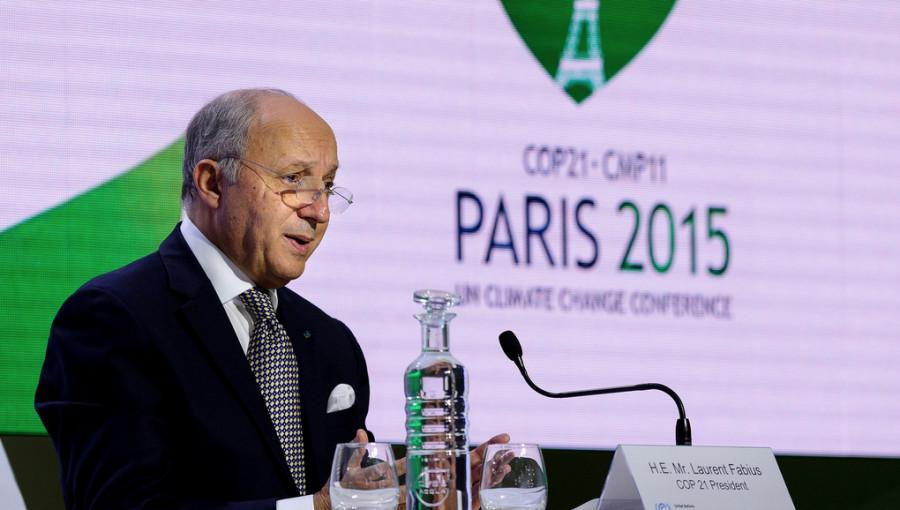21st U.N. COP Talks in Paris Aim to Lessen Carbon Emissions
December 12, 2015
The 21st United Nations Conference of the Parties (COP) to the United Nations Framework Convention on Climate Change (UNFCCC), in Paris has been extended to Saturday, one day longer than its expected two-week run that began on Nov. 30.
The conference, which had more than 40,000 delegates attending, has been pushing for countries to submit plans, called Intended Nationally Determined Contributions (INDC), that, starting in 2020, will outline ways in which countries will limit their carbon emissions and impact on the environment. These commitments will form the foundation of the 2015 climate agreement.
The aim of the negotiations between countries has been to achieve a legally binding and universal agreement on climate change, with the aim of keeping global warming below two degrees Celsius.
Upper School students were given the chance to Skype with Dr. Max Holmes, a climate scientist attending the COP in Paris, in the Nichols auditorium from noon to 12:45 during long lunch on Wednesday.
“I think it went great,” Green Team advisor Dr. Schafer said. “I was really impressed with the questions students had and I was really pleased with the turnout of students.”
Presented by the Green Team, the talk with Holmes included a brief introduction about the COP and Holmes’ own research, which was followed by Holmes answering questions from the audience of about 20 students and faculty members about the science of climate change and the situation in Paris.
Holmes answered questions on topics ranging from his own research to situation of conference and stated that he was “the most optimistic [he has] been about this in a while.”
He was recently featured in a Washington Post article about permafrost, a state in which soil that is frozen throughout the entire year thaws, releasing harmful carbon dioxide and methane.
“I think the climate talk was informative because it gave students a chance to learn about how the conference works and what we should expect to see from it,” Alayna Richmond (11) said. “I was hoping to learn more specifics about the countries’ proposals on how to reduce greenhouse gases, but Holmes said that the plans for cutting down are rather nebulous at this point.”
Richard Nevle, deputy director of the Earth Systems Program at the School of Earth, Energy & Environmental Sciences at Stanford University, just returned from Paris, where he was at COP21 with a group of students.
“Right now the estimates when you consider all the INDCs gets us to about 2.7 degrees Centigrade,” Nevle said of the progress being made at COP21. “Now that sounds awful, and it is, but compared to where we’ve been previously, so one of the things that really needs to come out of Paris to be what I would consider a success versus a failure is that you need a ratcheting mechanism and that is a part of the agreement that stipulates how, when and where the process will continue in order to catalyze and motivate continued increases in ambition, which is key.”
The 22nd COP to the UNFCCC is expected to take place in Morocco from Nov. 7 – 18 2016.
